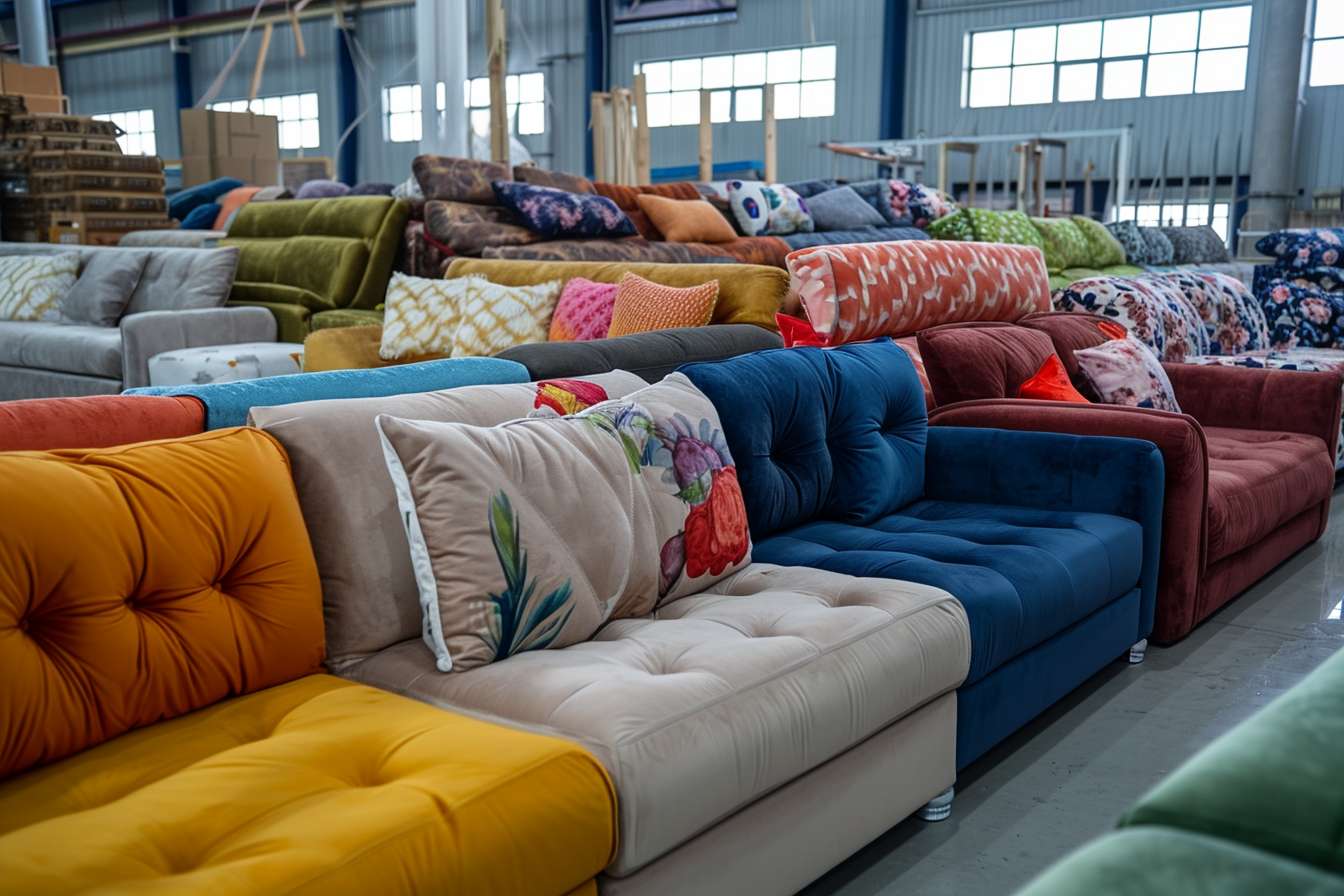Acoustic Textiles: The Silent Revolution in Home Design
In the realm of home design, a quiet revolution is taking place. Acoustic textiles, once relegated to the background of interior spaces, are now stepping into the spotlight as a key element in creating harmonious and functional living environments. This innovative approach to fabric design is transforming how we think about sound management in our homes, blending aesthetics with practicality in ways that were previously unimaginable.

The Science Behind Sound-Absorbing Fabrics
At the heart of acoustic textiles lies a fascinating blend of physics and material science. These fabrics are engineered to manipulate sound waves, absorbing or diffusing them to reduce noise levels and improve acoustic clarity within a space. The key lies in their structure - a complex arrangement of fibers that create tiny air pockets, acting as miniature sound traps.
Traditional sound-absorbing materials like foam panels or heavy curtains often compromise on style. Acoustic textiles, however, offer a sleek alternative. Manufacturers are now producing fabrics with varying degrees of sound absorption, measured by their Noise Reduction Coefficient (NRC). This allows designers to tailor the acoustic properties of a space while maintaining a cohesive aesthetic.
From Concert Halls to Living Rooms
The journey of acoustic textiles from specialized venues to residential spaces is a testament to their versatility. Initially developed for concert halls and recording studios, these fabrics have found their way into homes, addressing common acoustic challenges in modern architecture.
Open-plan living, while visually appealing, often creates acoustic nightmares. Hard surfaces like glass, concrete, and wood - staples of contemporary design - reflect sound, leading to echoes and amplified noise. Acoustic textiles offer a solution that doesn’t require structural changes. From wall hangings to upholstery, these fabrics can be seamlessly integrated into existing decor, transforming the auditory experience of a space without compromising its visual appeal.
The Aesthetic Evolution of Acoustic Design
Gone are the days when sound management meant unsightly foam panels or bulky curtains. Today’s acoustic textiles are a designer’s dream, available in a wide array of colors, patterns, and textures. This versatility allows for creative expression while addressing functional needs.
Leading textile designers are now collaborating with acousticians to create fabrics that are as beautiful as they are effective. From subtle textures that mimic natural materials to bold, abstract patterns that become focal points in their own right, these textiles are redefining what’s possible in interior design. The result is a new category of decor that marries form and function in unprecedented ways.
Beyond Noise Reduction: The Multifaceted Benefits
While the primary function of acoustic textiles is sound management, their benefits extend far beyond noise reduction. These fabrics contribute to overall well-being in ways that are only now being fully appreciated.
In urban environments, where noise pollution is a constant concern, acoustic textiles can create pockets of calm within the home. This has profound implications for mental health, improving sleep quality and reducing stress levels. In workspaces, whether home offices or commercial settings, these fabrics enhance concentration and productivity by minimizing distractions.
Moreover, the thermal properties of many acoustic textiles offer an additional layer of insulation, contributing to energy efficiency. This dual functionality - managing both sound and temperature - makes them an attractive option for environmentally conscious homeowners.
Integrating Acoustic Textiles: A Designer’s Perspective
Incorporating acoustic textiles into home design requires a nuanced approach. It’s not simply about covering surfaces but about creating a balanced acoustic environment that enhances the function and feel of each space.
Designers are now thinking in terms of acoustic zoning, using different textiles to create distinct areas within open-plan layouts. For example, a living area might feature lighter acoustic curtains to manage external noise, while a reading nook could incorporate denser acoustic wall panels for a more cocoon-like atmosphere.
The key is subtlety. The most successful applications of acoustic textiles are often those that go unnoticed, seamlessly blending into the overall design while quietly transforming the auditory experience of the space.
The Future of Acoustic Design in Homes
As our understanding of the impact of sound on well-being grows, so too does the importance of acoustic design in residential spaces. The future promises even more innovative applications of acoustic textiles, from smart fabrics that adapt to changing noise levels to biodegradable options that address environmental concerns.
The integration of technology is set to play a significant role. Imagine curtains that not only absorb sound but also incorporate ambient lighting or air purification properties. Or consider acoustic wall panels that double as interactive displays, blending entertainment with sound management.
As homes continue to evolve into multifunctional spaces - serving as offices, gyms, and entertainment centers - the role of acoustic textiles in creating adaptable, comfortable environments will only grow in importance.
In conclusion, acoustic textiles represent a quiet revolution in home design, offering a sophisticated solution to the challenges of modern living. By marrying aesthetics with functionality, these innovative fabrics are not just changing how our homes sound, but how we experience and interact with our living spaces. As we move towards a future where well-being and design go hand in hand, acoustic textiles stand at the forefront of this exciting evolution in interior design.





